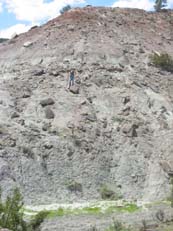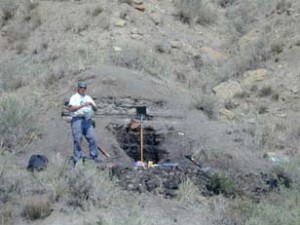(Campanian and Maastrichtian epochs)
Sevier highlands adjacent to the Western Interior Seaway may have allowed for drastic climatic/environmental gradients, while the radiation of angiosperms northward may have resulted in pronounced differences in vegetation over space. Can we reconstruct any such gradients? How did plants, animals, climate and topography interact during this time period? Specific topics of study include:
- Dietary and migratory behavior of late Cretaceous dinosaurs (both herbivores and carnivores). See Fricke and Pearson (2008); Fricke et al (2008); Fricke et al (2009).
- Regional variability in environmental conditions and distribution of angiosperm plants during the late Cretaceous. See Rogers et al (2010)
- Paleoelevation of the Sevier Highlands and the impact of these highlands on climate (in particular on monsoonal circulation). See Fricke et al (2010); Sewall and Fricke 2013.


